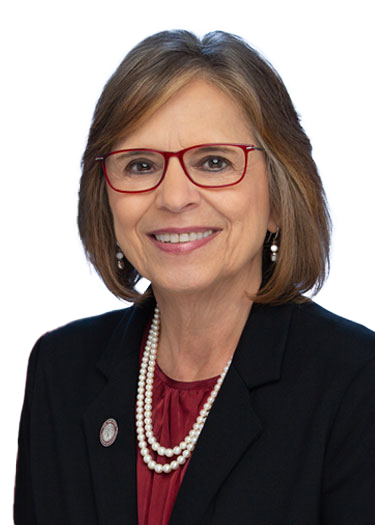Endicott-Johnson Pagoda Rededicated
Landmark Restored as part of $125,000 NYS Assembly grant
JOHNSON CITY, NY – Following a $125,000 restoration, the historic pagoda at C. Fred Johnson Park in Johnson City was rededicated Thursday. Assemblywoman Donna Lupardo joined Johnson City Mayor Greg Deemie, Village Historian Janet Ottman, and Broome County Historian & Executive Director of the Preservation Association of the Southern Tier Roger Luther to discuss the building’s history, restoration efforts, and its future use.
The pagoda’s restoration had been discussed for years but finally came to fruition through the efforts of Mayor Deemie and Assemblywoman Lupardo, who secured a $125,000 State and Municipal Facilities (SAM) grant for repairs and renovation. A new roof, windows, doors, and lighting were all included as part of restoration efforts.
“The Pagoda is one of a kind and a real curiosity for people who visit this park,” said Assemblywoman Lupardo. “It stirs up old memories of relatives working at EJ, or coming to this park to swim in the huge above-ground pool, or watching the Triplets play just down the street. This isn’t just about preserving a building, it’s about preserving the story of the people who helped build this community and that of the ‘Valley of Opportunity’ that brought them here.”
“The pagoda has always been a point of pride for those of us who grew up in Johnson City,” Mayor Deemie said. “Many of us have been advocating for its restoration for years and I’m glad we were finally able to get it done so people can enjoy this landmark for years to come. I would like to thank Assemblywoman Lupardo for securing the funding to complete the restoration.”
Originally a pump house for nearby Endicott-Johnson factories, the pagoda ceased operation in the 1960s. Over the years, environmental factors and vandalism threatened the historic building’s preservation; the pagoda is now positioned approximately 100 yards west of its original location after nearby development also threatened its demolition.
The pagoda was built around 1929 under the guidance of C. Fred Johnson who chose the style of the building because of his affinity for Japanese architecture. Workers who built the pump house included various items from E-J factories and recreation halls in its masonry. Items embedded in the walls include a fire extinguisher, a bowling pin, and pieces of factory machinery. It is currently being considered for national historic recognition.
